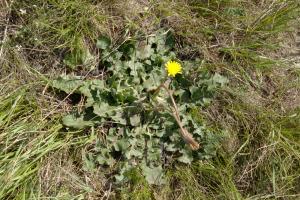 The coexistence of agamospermy and sexuality characterizes most of the ~60 sections of the genus Taraxacum. Section Dioszegia, comprising T. serotinum and its allies, are an exception because only sexuals are reported for all the members of this group.
The coexistence of agamospermy and sexuality characterizes most of the ~60 sections of the genus Taraxacum. Section Dioszegia, comprising T. serotinum and its allies, are an exception because only sexuals are reported for all the members of this group.
